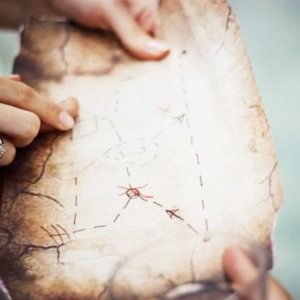Dominican Republic
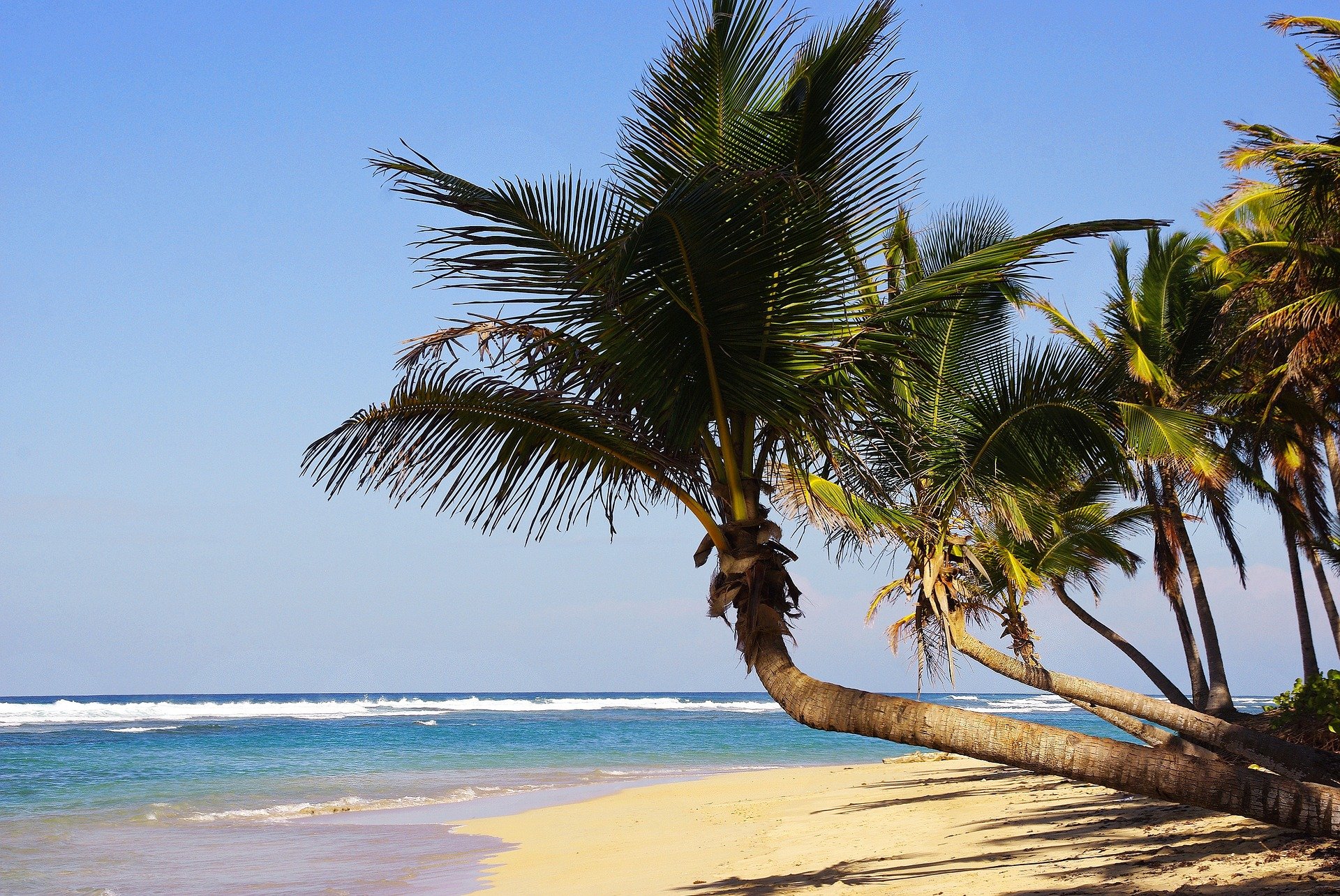
Sports and adventures
Here are the sports and adventures we recommend in this destination.
For more details about sports click here.
- Hiking: in the Cotubanamá reserve to discover the history of the Taino population who lived in the caves, or a night excursion on Pico Duarte, to admire the sunrise from the summit at 3,087 meters, or even the panoramic climb to Hoyo De Pelempito, from which various paths wind near the observatory, which overlooks an imposing geological depression with 700 meters deep falls, against the backdrop of the majestic Sierra de Bahoruco mountains.
- Mountain biking: in the Humedales de Nigua Ecological Park or in the El Choco National Park where there is an intense route of 50 kilometers to test your endurance, then from Jarabacoa to Constanza, the roads pass close to rivers and waterfalls to cool off.
- Surfing, windsurfing and kitesurfing: thanks to constant trade winds and perfect waves all year round, the Dominican Republic has earned a reputation as a favorite destination for these water sports. The best locations are Playa Las Salinas, Cabarete, Kite Beach, Playa Encuentro, Punta Popy, Playa Bonita, Punta Cana, Macao, Playa Blanca.
- SUP, canoe, kayak and body board: in the Dudú Lagoon, completely immersed in the forest, formed by a series of freshwater ponds in cobalt blue and turquoise and by streams fed by underground caves. Or you can rent a kayak to glide along the majestic Chavón River in La Romana, the set of the famous Apocalypse Now movie.
- Zipline: the bravest can cross the Dudù Lagoon with a zipline suspended eight meters high. Samaná is home to the longest route in the country at a height of 112 meters, crossing the beautiful hills of El Valle. In the province of Puerto Plata there are numerous lifts: from the Megatruck course, more than two kilometers long and located on a private ranch, to the ten-platform course of the Yasica Adventure Park, a little off the beaten track. In the Punta Cana area there is the longest zipline in the region, not far from the splendid Hoyo Azul, a natural freshwater lagoon where you can dive.
- Caving: the Dudù Lagoon is also the only place in the world where you can practice caving passing from one natural lake to another. In the Fun Fun Cave instead, descending with a rope, you can explore the magnificent connections between underground tunnels, giant corridors, ancient rock paintings, stalactites and stalagmites with the background of the natural sounds produced by the underground rivers of the quarries. Even within the El Choco National Park, there are caves that in the past housed the Taino Indians, to be visited with guided tours.
- Horseback riding: inside the Rancho Capote, the Fun Fun Cave is the starting point for horseback excursions through the tropical forest, accompanied by expert guides.
- Diving: the underwater environment is partly protected as a natural reserve, with coral reefs, caves, wrecks of galleons, submerged wrecks and a rich variety of marine fauna. Among the sites of greatest interest we find the spectacular 40-meter coral wall off the coast of the island of Catalina and Saona; the pristine Playa Frontón beach in Las Galeras, where turtles and rays can be observed; Cayo Arena, where you can practice snorkeling and swim among colorful fish.
- Paragliding: paragliding over the mountain towns of Jarabacoa and Constanza offers an extraordinary and incomparable view of the Caribbean landscape. You’ll fly over mountain peaks, towering waterfalls (such as Jarabacoa, which has hosted the set of several Hollywood movies, including Jurassic Park), plantations and villages. We recommend a launch at sunset, when the landscapes are tinged with red.
- Canyoning: what a better place than the 27 Charcos de Damajagua Waterfalls Park in Puerto Plata? Here are a series of waterfalls to be conquered by dint of jumps and slides. It is possible to enter the gorge of a river for descents from 46 meters and dives from 18 meters in crystal clear waters. In Jarabacoa the scenery becomes even more adrenaline in the canyons of the Baiguate waterfalls.
- Rafting: Jarabacoa is the ideal place to go rafting among the rapids, between mini-waterfalls and rocky cliffs.
- Quad/ATV or off-road Safari: an inland safari from Puerto Plata to Punta Cana is the ideal way to get in touch with the local rural culture, making friends with the locals, always ready to welcome guests with a glass of coconut water.
- Whales and other wild marine animals: in the bay of Samaná, boat trips are organized to observe the courtship and birth of whales during the mating season. In the northern marine reserve of Estero Hondo you can observe manatees, or the evolution of dolphins in the waters of the Los Haitises National Park, or sea turtles.
- Cenote and natural pools: wonderful places to take a bath surrounded by lush rainforests in breathtakingly colored waters, from bright turquoise to emerald green. In Punta Cana there are for example the famous Hoyo Azul (the “Blue Well”) and the ecological reserve of Ojos Indígenas.
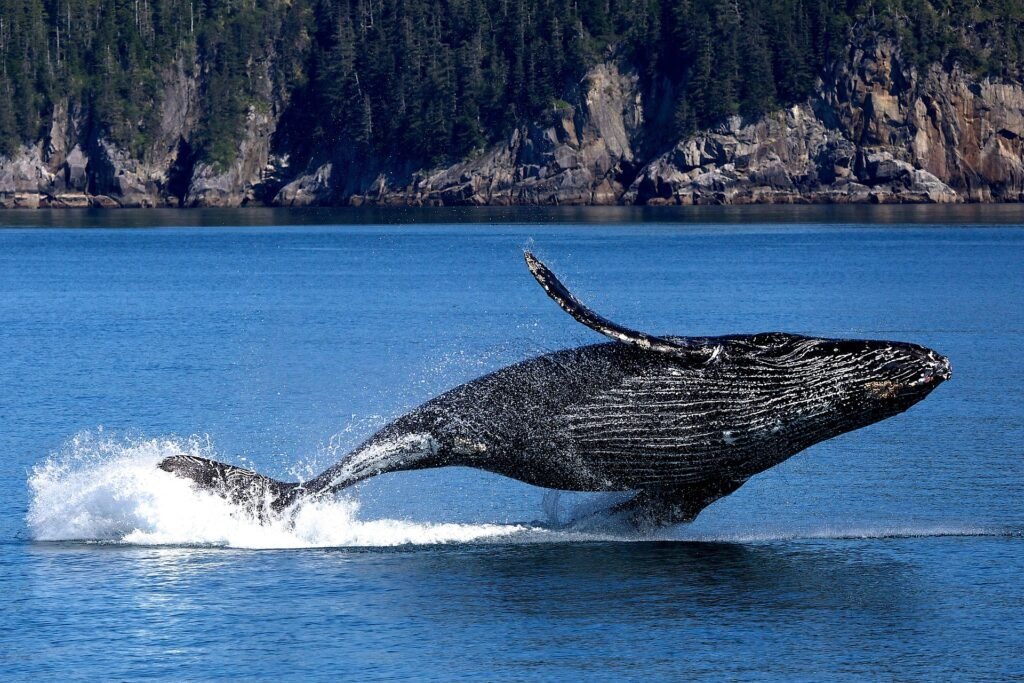
Whale watching
Experiences
Here are some of the unique and exciting experiences you could live in this destination:
- Cigars, rum and sugar cane: in the Dominican Republic a very high quality tobacco is produced, in the city or in the plantations that can be visited. Have a few stops in a cigar lounge especially in Santo Domingo and Santiago, for a few sips of excellent white or dark rum. To learn more about the history of Dominican rum and cigar, visit the Rum and Tobacco Museum in Ciudad Colonial and the Brugal rum production plant in Puerto Plata.
- Rock paintings in the caves: throughout the country there are numerous caves that host Taino pictograms and rock engravings preserved in excellent condition, such as the Cueva De Las Maravillas, in La Romana, with rock paintings dating back thousands of years, stalactites and stalagmites .
- Coffee and cocoa plantations: in the heart of the Dominican Republic, among the hills, there are vast agricultural plantations where it is possible to take guided tours, learn about the journey of coffee from bean to cup, or have a full-immersion experience in the world of chocolate, from excursions among the cocoa trees to the processing of chocolate in bars and, of course, the tasting of excellent chocolate.
- Carnival: throughout the country, Carnival is celebrated with great enthusiasm, with colourful parties, each with a particular characteristic. In Cabral, for example, the characteristic Cachúa dressed in bat costumes open the parade with impressive whips with which they chase the devil. Every Sunday in February, and in some areas until the first week of March, the streets of all the main cities are animated by parades full of energy and colors. The carnival of La Vega is the oldest, the largest and the most popular, followed by Santiago. The most grandiose and colourful event is the final parade, which takes place on the first Sunday of March in Santo Domingo.
- Cable car: an exciting 10-minute ride aboard a cable car, flying over the magical landscape of Puerto Plata at a height of 800 meters, from the sea to the verdant and luxuriant plains, to Mount Isabel de Torres, the final destination of the journey.
- Amber and Larimar: in the Dominican Republic there is the only Larimar mine in the world. Larimar is a semi-precious blue stone used in Dominican jewellery. Local miners dig more than 200 meters deep inside the mountain and it is possible to see them re-emerge with freshly extracted stones during guided visits to the mines. Dominican blue amber, made famous by the film Jurassic Park, is mined in the north of the country, in the hills of La Cumbre, the only place where it can be found.

Carnival
What to see
Dominican Repubblic offers wonderful locations that are absolutely worth visiting. Here you have some:
- Santo Domingo: it is the oldest capital in America. We recommend that you visit Ciudad Colonial, the first European settlement in the Americas, inside which you will find Catedral Primada De América, the first cathedral in the Americas where the remains of Christopher Columbus were found, the sixteenth-century ruins of the Monasterio De San Francisco, the first Franciscan monastery in the New World, which hosts merengue concerts every Sunday. Also, do not miss the Palacio de Engombe, the Plaza de la Bandera, the Parque Nacional Mirador del Sur, the Jardin Botanico National, the Palacio National de la Presidencia de la Dominican Republic, Plaza Juan, Baròn, the Faro a Colon (il Faro Columbus, in the shape of a cross, inside which the remains of Christopher Columbus are kept), the Acuario Nacional, the Alcazar of Colon, the Rum Museum, the Barrio Chino, the Convento De Los Dominicos (with the Baroque facade in white stone and coral and ceramic inserts).
- Altos de Chavón: to see the church of San Stanislao, consecrated in 1979, is one of the most beautiful churches in the Dominican Republic
- La Isabela – Puerto Plata: the first European settlement in the New World built by Christopher Columbus. Here you can see the still perfectly preserved ruins of Christopher Columbus’ first house, built on a cliff overlooking the Atlantic Ocean.
- Fishing villages: in one of these, in Puerto Plata, the merengue is said to have been born; Bayahíbe is completely Dominican-style, from restaurants to bars, from street art to typical stalls, as well as fishermen who bring their catch back to shore every day.
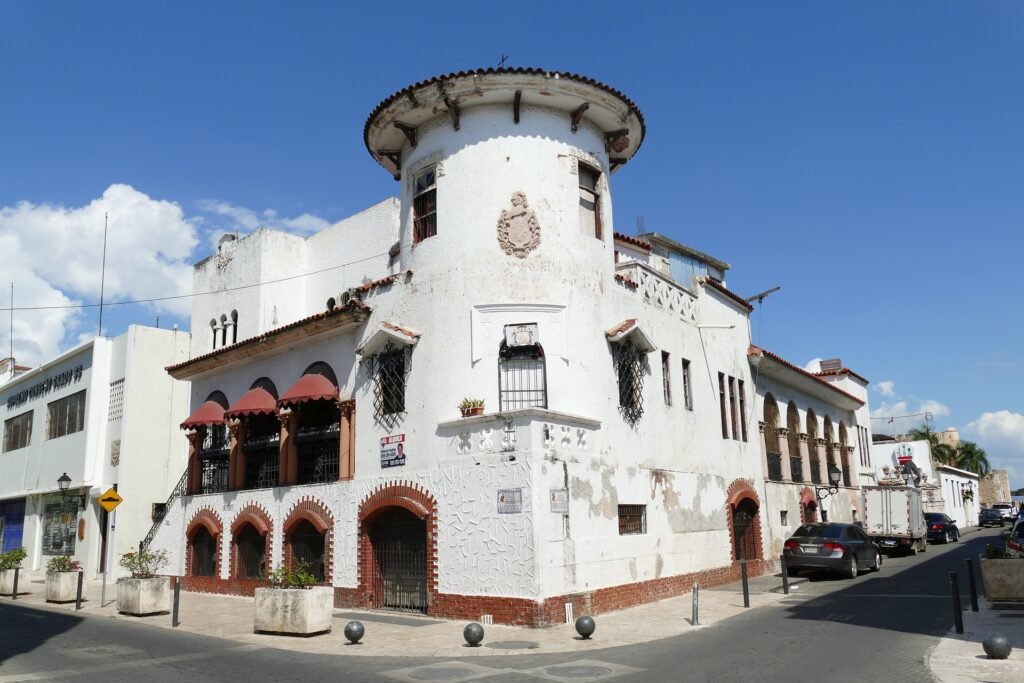
Santo Domingo
Nature and beaches
Thanks to its heterogeneous morphology and climatic variety, the Dominican Republic is the perfect habitat for over 6,000 species of plants and animals, including a wide variety of endemic species that live in the many parks of the country.
- Cotubanamá National Park, in Bayahíbe, host the characteristic Bayahíbe Rose and extends to the islands of Saona and Catalina, two splendid islands teeming with marine species.
- The largest national park is the Jaragua, a UNESCO biosphere reserve, characterized by beaches, lagoons, a particular dry tropical forest (characteristic Caribbean) and coral islands.
- Cachote is a protected area of cloud forest (an evergreen humid forest characterized by a curtain of clouds at low altitude) that hosts a small community at 1,100 meters above sea level. There are several routes to admire the tropical flora and the numerous species of birds for birdwatchers.
- Los Haitises National Park is interesting to be visited by boat as not to miss the imposing rocks that emerge from the sea.
- The Humedales de Nigua Ecological Park is a nature reserve in the province of San Cristóbal that is home to over fifty species of birds, a great variety of reptiles, numerous plants and lakes. An ideal destination for sports enthusiasts who can venture out on a mountain bike between the routes.
- In the southwestern region, the Baní sand dune area consists of valleys and sandy mountains on which it is possible to climb and admire, on one side, the panorama of Playa Las Salinas, a surfer’s paradise, and, on the other, the splendid bay of the same name.
The Dominican Republic is above all known, however, for its over 200 beaches, some of the most beautiful in the world, many of which are practically untouched, on the Atlantic and Caribbean coasts, alternating very fine white sand with the striking black sand that characterizes some sections of the south-west coast of the Country:
- Punta Cana: is the main tourist area of the Country, known as the “Costa del Cocco” for the hundreds of coconut palms scattered on the white beaches.
- Playa Bàvaro: it is considered one of the 10 most beautiful beaches in the world thanks to its coral reef.
- Playa Uvero Alto: this wide beach of glistening golden-white sand is battered by raging waves, perfect for bodyboarding and, in some places, surfing.
- Playa Macao: it is a surfer’s paradise and with its golden sand and countless palm trees it is one of the five most beautiful beaches in the country. Also try the typical fish dishes offered by the restaurants.
- Playa Bayahibe: The striking white sand beaches are characterized by the iconic fishing boats and are often quiet and uncrowded, although they are home to lively bars and restaurants.
- Playa Rincón, in Samaná: it is considered one of the most beautiful in the world.
In addition to the lovely beaches, the Dominican Republic also boasts numerous coral islands that offer heavenly scenery. On a catamaran it is possible to reach the islands of Saona and Catalina, which are home to the largest natural pool in the Caribbean and endless stretches of fine sand bathed by crystal clear waters. Opposite the coast of Montecristi are the Siete Hermanos, splendid isolated coral islands.
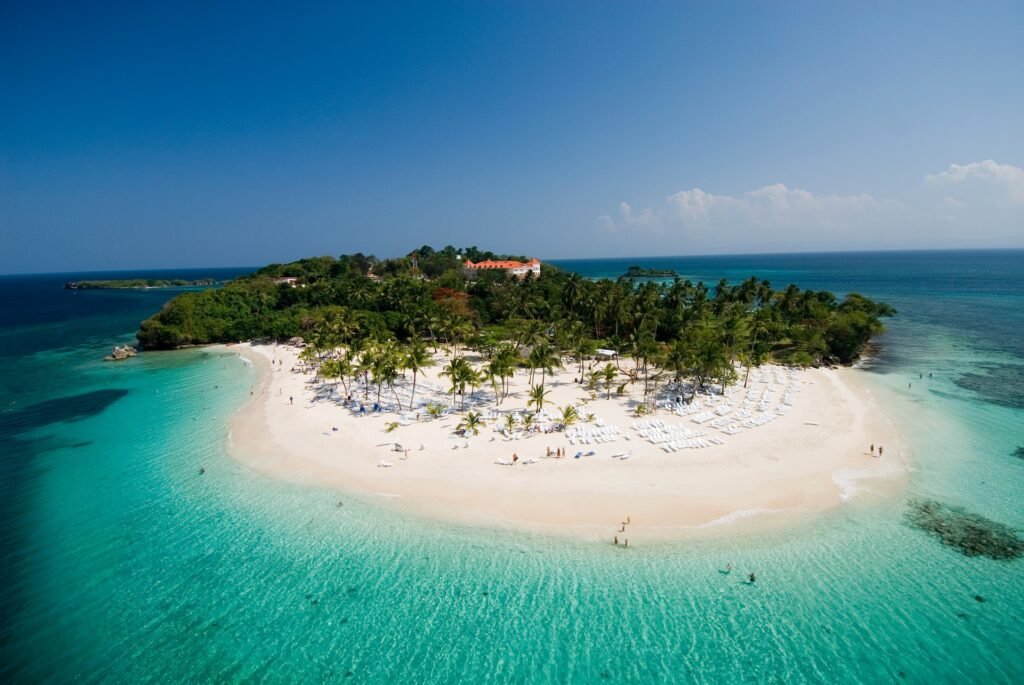
Cayo Levantado
Food and Wine
Dominican cuisine is rich and varied.
In addition to classic Caribbean rice and bean dishes, the Dominican Republic has unique specialties.
Here are some of the most popular in the country:
Los tres golpes: a dish eaten for breakfast consisting of mashed green bananas topped with red onions cooked in vinegar, fried cheese and fried salami. If you want, you can also add fried eggs.
Dominican bandera: rice and beans accompanied by chicken or other meat and a salad with avocado and tostones (crispy pancakes with green bananas).
Sancocho: it is often prepared on special occasions, such as New Year’s Eve, and eaten with the family; is a stew made from chicken, pork, yucca, sweet potato, green banana and potato served with a bowl of white rice and slices of avocado. There are those who use it to treat a hangover.
Pasteles en hoja: Often made at Christmas with a paste of green bananas, stuffed with meat and wrapped in a banana leaf.
Mofongo: This is a dish originally from Puerto Rico, but Dominicans have their own version of this dish based on mashed green bananas, garlic and pork or shrimp.
Pescado frito: fried fish with tostones, avocado and yaniqueque (thin and crunchy fried flatbread) is another typical dish from Dominican beaches.
Then there are typical dishes from each region, such as the Samaná pescado con coco (fish with coconut); in the northwest, goat meat is a staple food, while in the central mountainous region, grilled meat (parrilladas) restaurants are commonly found along the roads.
Habichuela con dulce: an exclusive dessert of the Dominican Republic based on sweet beans, consumed mainly in the Easter period.
Coconete: a round and crunchy coconut biscuit.
Majarete: a sweet corn pudding sprinkled with cinnamon and nutmeg.
Chimichurri, or chimi: succulent Dominican version of the hamburger, made with toasted white bread stuffed with grilled meat, cabbage, onions and tomatoes, with the addition of mayonnaise and ketchup; it is served in a plastic bag to consume standing up.
Pica pollo (fried chicken): is among the most common street foods, as well as chicharrón de cerdo (fried pork rinds).
Yaroa: a kind of lasagna with layers of chicken, beef, green bananas, cheese and french fries, baked in the oven and topped with mayonnaise and ketchup.
Picalonga: is a mix of pork (including entrails and black pudding) that are sometimes seen dangling from vendors’ carts, waiting to be cooked.
Fruit lovers will find their paradise here. In addition to the usual bananas and papaya, locally called guineo and lechosa, you can taste the passion fruit, mangoes of numerous varieties, zapote (sapotilla), granadillo, guanabana (graviola), carambola, tamarind, coconut, pineapple, guava and many others .
To refresh and quench your thirst you drink undiluted sugar cane juice, tamarind or a batida, a milkshake with condensed milk and fruit which, in the Dominican Republic is called Morir Soñando (“dying dreaming”) and is prepared with milk and juice fresh orange.
If instead you want something alcoholic, here you are satisfied:
Mamajuana: it is a drink that is found almost everywhere, prepared with a fermented blend of tree bark, herbs, red wine and rum. It is said to have aphrodisiac properties.
Various types of beer are also produced in the Dominican Republic. When ordering it, ask for a fría (a cold one) or a vestida de novia (dressed as a bride), that is a bottle so cold that it is covered with a thin layer of white ice.
But the Dominican Republic is known worldwide for its rum production. Dominican rum is produced by major brands, the best known of which are Brugal and Barceló. Ron Bermúdez, in the “blanco” and “dorado” varieties, dates back to the 19th century. Ron Macorix has recently gained acclaim thanks to versions flavored with spices, pineapple and coconut.
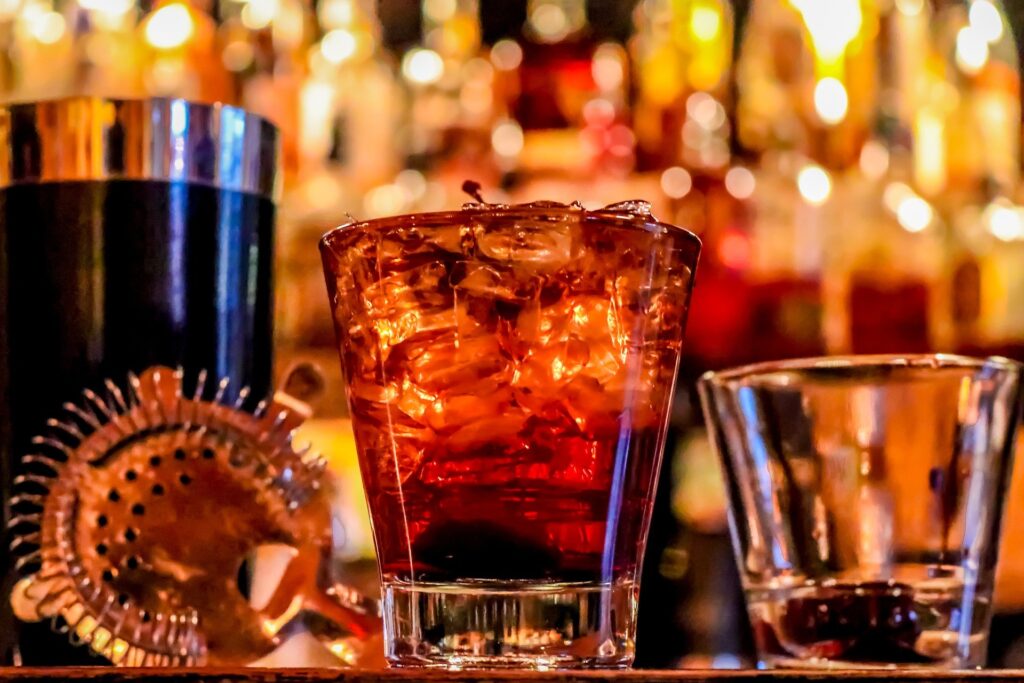
Rum
When to go
In the Dominican Republic there are only two seasons: a dry one, from the end of November to mid-May, in which the trade winds blow, thunderstorms are rare and the temperature is between 28 ° and 29 ° C; the other runs from late May to mid-November and is the wet season, with more intense and frequent rains. In particular, hurricanes can form between September and October.
If you want to participate in one of the most spectacular carnivals in the world you have to be here in February-March.
For diving the best time is between June and September, when the waters are calmer and offer optimal visibility. However, it is possible to dive all year round thanks to the water temperature that constantly fluctuates between 24 ° C and 29 ° C.
Canyoning and caving can be practiced at any time of the year in both the central and northern regions, thanks to the mild climate even at altitude.
The beaches of the Caribbean coast can be enjoyed at any time of the year. For the north coast, it is advisable to check the weather conditions.
Information
Language: spanish
Currency: Dominican Peso – RD$ – DOP
Capital: Santo Domingo
For up-to-date and detailed information visit www.viaggiaresicuri.it
Some tips
Taste the sweet fruits you will find at the markets.
Take home amber and larimar jewellery, cigars, chocolate, coffee or a bottle of Mamajuana as a souvenir and let yourself be carried away by the liveliness of this country.


